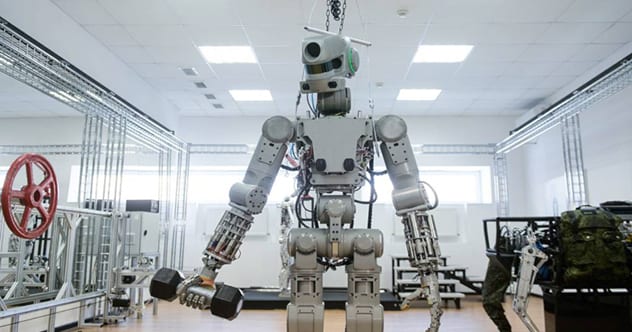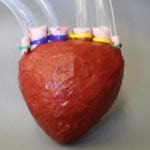 Our World
Our World  Our World
Our World  Pop Culture
Pop Culture 10 Incredible Female Comic Book Artists
 Crime
Crime 10 Terrifying Serial Killers from Centuries Ago
 Technology
Technology 10 Hilariously Over-Engineered Solutions to Simple Problems
 Miscellaneous
Miscellaneous 10 Ironic News Stories Straight out of an Alanis Morissette Song
 Politics
Politics 10 Lesser-Known Far-Right Groups of the 21st Century
 History
History Ten Revealing Facts about Daily Domestic Life in the Old West
 Weird Stuff
Weird Stuff 10 Everyday Products Surprisingly Made by Inmates
 Movies and TV
Movies and TV 10 Actors Dragged out of Retirement for One Key Role
 Creepy
Creepy 10 Lesser-Known Shapeshifter Legends from Around the World
 Our World
Our World 10 Science Facts That Will Change How You Look at the World
 Pop Culture
Pop Culture 10 Incredible Female Comic Book Artists
 Crime
Crime 10 Terrifying Serial Killers from Centuries Ago
Who's Behind Listverse?

Jamie Frater
Head Editor
Jamie founded Listverse due to an insatiable desire to share fascinating, obscure, and bizarre facts. He has been a guest speaker on numerous national radio and television stations and is a five time published author.
More About Us Technology
Technology 10 Hilariously Over-Engineered Solutions to Simple Problems
 Miscellaneous
Miscellaneous 10 Ironic News Stories Straight out of an Alanis Morissette Song
 Politics
Politics 10 Lesser-Known Far-Right Groups of the 21st Century
 History
History Ten Revealing Facts about Daily Domestic Life in the Old West
 Weird Stuff
Weird Stuff 10 Everyday Products Surprisingly Made by Inmates
 Movies and TV
Movies and TV 10 Actors Dragged out of Retirement for One Key Role
 Creepy
Creepy 10 Lesser-Known Shapeshifter Legends from Around the World
Top 10 Illegal Street Drugs That Actually Have Really Good Uses
Slowly but surely, the US is getting its head around the idea of decriminalizing marijuana. Many states now allow its regulated sale for medical purposes, recreational use, or both. By federal law, it may still be illegal to use, possess, sell, cultivate, or transport in the rest of the country, but we’re a long way away from the whole “Reefer Madness!” panic of years gone by.
So what’s with the change of heart?
Well, there are a few reasons behind it. The big one is that weed has been proven to have some impressive health benefits. But surely, no other illegal drugs can actually be good for us in any way, can they? Well, it turns out that almost all major controlled substances can actually be put to good use in one way or another.
Let’s run down 10 illegal street drugs that have some surprisingly useful medical applications.
10 Cannabis
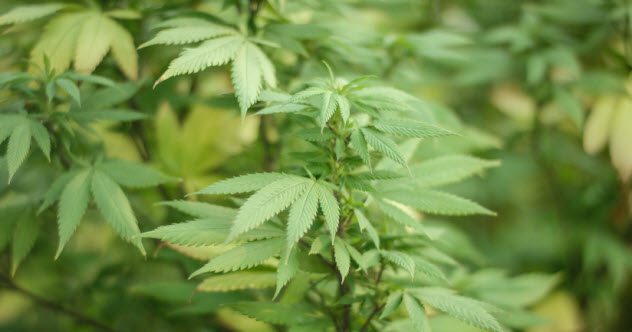
Pot, weed, marijuana, grass, bud, herb, call it what you will. Humans have been drying out cannabis plants and smoking them for literally thousands of years. Considered one of the safer and least serious drugs around, most people will have tried getting high at least once or twice in their lives. It’s estimated that 3.8 percent of the global population are regular users of the stuff.
Medical marijuana is currently legal in 26 US states, the District of Columbia, and Guam. So you know there must be plenty of health benefits from hitting the odd bong. And there are. It’s all about the cannabinoids. Weed is packed full of them—the main one being THC (tetrahydrocannabinol), an excellent painkiller. The body even produces small amounts of cannabinoids naturally to help reduce pain when needed.[1]
Another cannabinoid in the ol’ Mary Jane, CBC (cannabichromene) has been proven to help in the treatment of epilepsy. Weed can also reduce inflammation, help battle multiple sclerosis, stop spasms, ease bladder problems, and even prevent chemotherapy nausea.
All in all? It’s a proven useful plant.
9 Cocaine
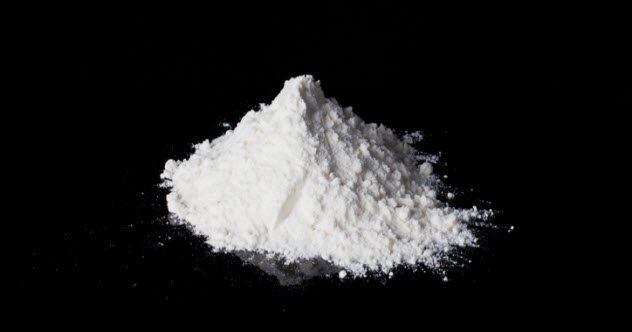
If you’re anything like us, you probably picture a disco from the 1970s when you think of cocaine. Huge bowls full of 95 percent pure Colombian marching powder clogging up the sinuses of rich playboys and their supermodel girlfriends. But there’s a much misunderstood side to blow, you know.
Not all that long ago, cocaine was hailed as a worldwide wonder drug. It was widely used as a laxative and a cure for motion sickness, hay fever, and even alcoholism. But soon, it proved addictive. So alternatives were found.[2]
Medicine didn’t abandon cocaine, though. It still gets used by medical professionals today (and not just when they’re at a club). Eye, nose, and throat specialists still regularly employ cocaine—usually in paste form—as an anesthetic in surgeries.
8 MDMA
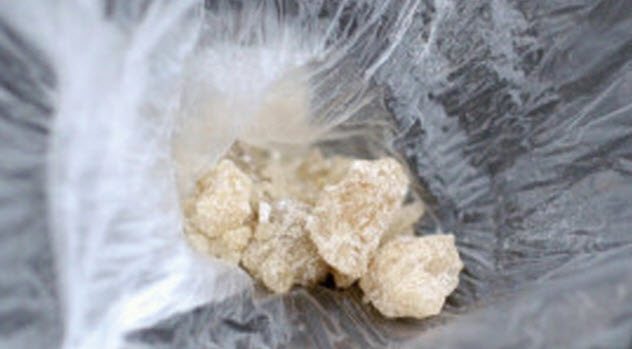
MDMA in its crystallized form can cure post–traumatic stress disorder (PTSD). Naturally, the psychiatrists behind the study with this finding aren’t recommending that traumatized people start gobbling up ecstasy like M&M’S and expecting immediate positive results.
But in clinical environments, the rise in serotonin initiated by “Molly” results in calmer, happier patients who can bond nicely and easily with their therapists. These patients open up more willingly, and treatment becomes so much easier for everyone involved.[3]
Stress and fear is repressed while on MDMA, so patients can discuss traumatic experiences without a problem. They can get to the root of their issues without having to worry about the further damage caused by remembering—and potentially reliving—their troubling experiences.
7 Crystal Meth
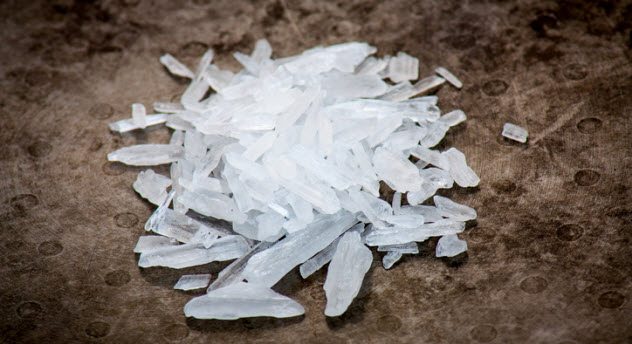
If you have trouble concentrating at work and find yourself daydreaming, fidgeting, and generally being distracted, there’s a chance you might be suffering from attention deficit hyperactivity disorder (ADHD). If you see your doctor about it, there’s a much smaller chance that he’ll tell you to meet him in the parking lot afterward to sell you crystal meth. Although, perhaps he should . . .
Stimulants like meth, when prescribed and taken in specific dosages (in other words, don’t try self-medicating), can regulate brain chemicals called neurotransmitters like dopamine and norepinephrine. Both help to control addictive behavior and compulsiveness.
We don’t want to convince you to start breaking bad and cooking meth in your underpants in an RV in the middle of the desert or anything, but meth can also help to combat obesity—as you can see in any “fan” of the drug. Fast weight loss programs will often recommend a drug called Desoxyn (aka dimethylbenzeneethanamine hydrochloride or pure methamphetamine).[4]
6 Magic Mushrooms
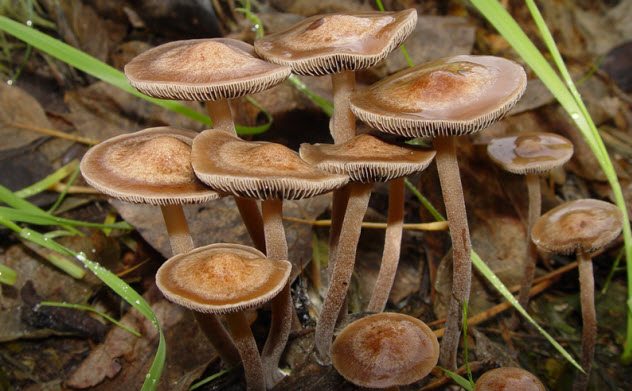
Shrooms are great if you want to spend four hours staring at a wall, watch it bleed into a billion kaleidoscopic colors, and fail to keep up with the plot of any number of episodes of South Park. But they’re also good for a number of slightly more useful other things, too.
The chemical in mushrooms that makes you trip is called psilocybin. Researchers at the University of Arizona are confident of its ability to effectively treat patients with obsessive–compulsive disorder (OCD).
Mushrooms also help to alleviate the discomfort of severe cluster headaches, so much so that otherwise well-behaved people all across the world are risking jail time by buying and taking shrooms to kill the pain that can wreck their lives. Not only do these mushrooms kill the pain, they cause longer periods between attacks.[5]
5 Ketamine
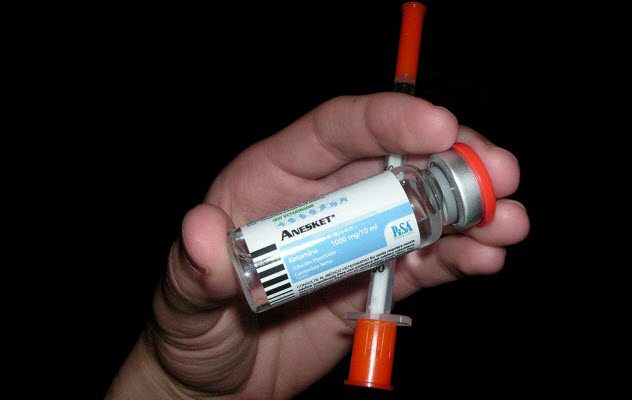
Ketamine might be a party drug to some people, but to veterinarians, it’s a horse tranquilizer. So when we tell you that “Special K” can help with your depression, you might not be too shocked. Sure, anything that can knock out half a ton of horse is going to calm you down, right? But ketamine’s ability to fight depression goes beyond that.
A study conducted at Yale University showed that ketamine doesn’t just alleviate the symptoms of being depressed. It can actually heal parts of the brain damaged by years of acute stress, trauma, and depression by fixing disconnected synapses. One dose can get to work in hours and last up to 10 days.[6] It’s no wonder that horses always look so pleased with themselves.
4 Mescaline
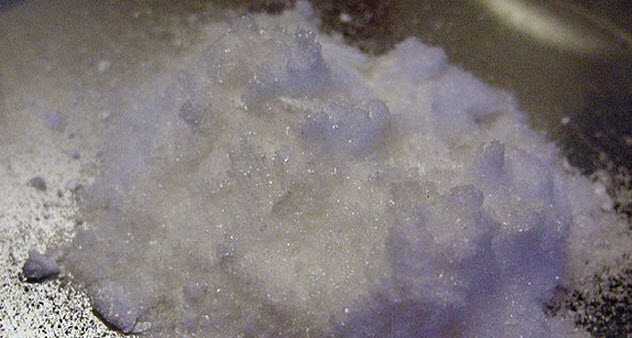
Made famous by Hunter S. Thompson’s road trip book Fear and Loathing in Las Vegas, mescaline is a phenethylamine found in certain types of cacti. It’s the principal active psychedelic in peyote—the drug of choice of the Navajo tribe and Doors front men alike. And strangely, it might just be the cure for alcoholism.
In many Native American tribes, hallucinogenic drugs like mescaline and DMT have long been associated with addiction. But not in the way you might think. Rather than being drugs to which you get addicted, they help stop addictions to other substances. Scientific research into these drugs has been relatively limited, but the little that has been conducted appears to bear out the idea.[7]
Alcoholism in Native American communities is an issue. Addiction rates are twice as high as with other American ethnicities. Yet in the Native American Church (aka “Peyotism”), rates of alcoholism are extremely low. Small doses over a course of weeks have been shown to relieve the intense cravings in addicts to drink.
“Psychedelic therapy” is a controversial topic. The evidence may not be perfect, but it’s more than anecdotal.
3 LSD
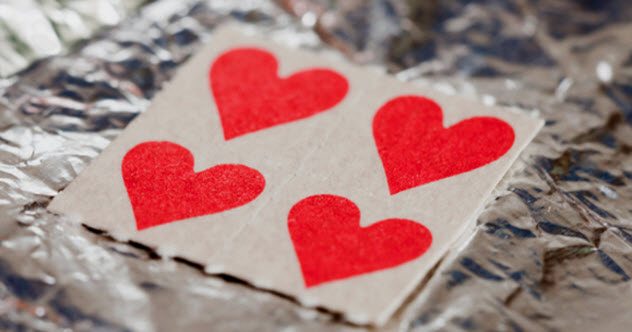 Lysergic acid diethylamide has its uses, too. And we’re not just talking about acid being the only way to make it through a Grateful Dead gig. Studies conducted at Maryland’s Spring Grove State Hospital showed that controlled doses of acid greatly reduced anxieties about death in terminally ill cancer patients.
Lysergic acid diethylamide has its uses, too. And we’re not just talking about acid being the only way to make it through a Grateful Dead gig. Studies conducted at Maryland’s Spring Grove State Hospital showed that controlled doses of acid greatly reduced anxieties about death in terminally ill cancer patients.
Of the people monitored, a third felt “dramatically less tense” about their situation. Another third felt generally better about their fate, and the final third felt the same but no worse about their diagnosis.[8]
2 Heroin
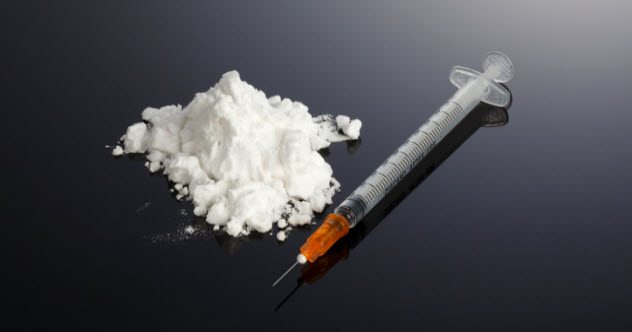
You don’t need us to tell you that heroin is bad. You’ve seen Trainspotting. You might even have read William S. Burroughs’s Junkie. It’s nasty stuff. But as a pain reliever? There’s none better.
The federal government’s blanket ban on horse means that you won’t find it in a US hospital. (At least, you shouldn’t be able to.) But in the UK? It’s given to pregnant women!
Perhaps to save scaring the expectant mom,[9] it’s called “diamorphine.” But it’s heroin all the same. Injected intravenously, it relieves severe pain and reduces stress. It can also make labor last slightly longer, but it’s relatively risk-free. A one-time shot doesn’t cause addiction and has no ill effect on the body.
1 GHB
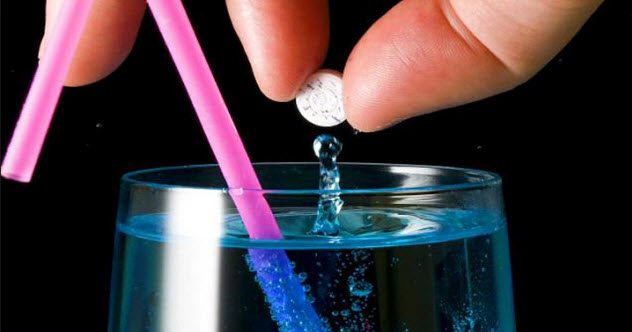
What makes so gammahydroxybutyrate (GHB) so controversial is also what makes it so useful. Taken recreationally, it produces a euphoric high and deep feelings of relaxation. It’s this depressant quality, however, that has seen GHB employed in so many date rapes. It was even the murder weapon of choice for the British serial killer Stephen Port, who would shoot his victims full of lethal doses of the stuff.[10]
Although its reputation is tainted due to its use by violent criminals, this naturally occurring psychoactive is actually one of the most effective substances known to man when it comes to treating insomnia. GHB’s narcoleptic qualities are useful. Very useful. It’s just such a shame that they’re sometimes exploited so cynically and disgustingly.
Steve is a freelance writer who writes news stories, features, articles, reviews, and lists. But *always* forgets to write his mother a birthday card. Follow him on Twitter, or follow him into the pub and buy him a drink.
Read more intoxicating facts about illegal drugs on 10 Crazy Myths About Illegal Drugs and 10 Crazy Drugs You Don’t Know (And Don’t Want To).

